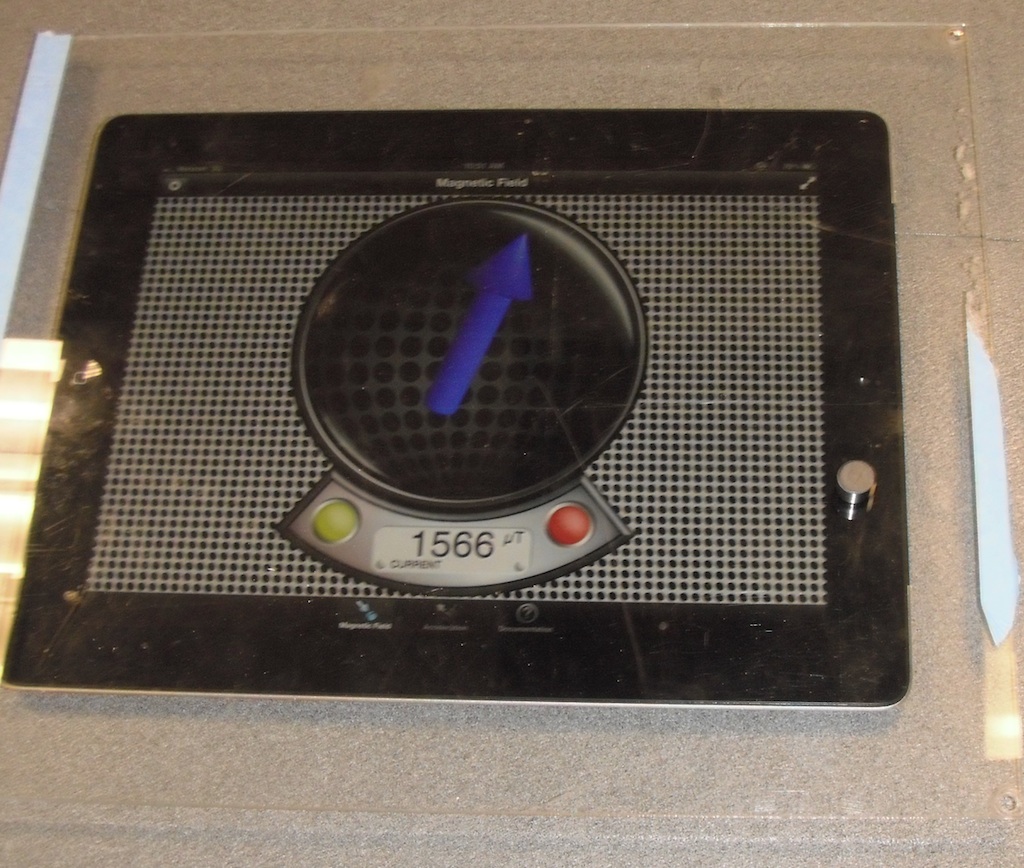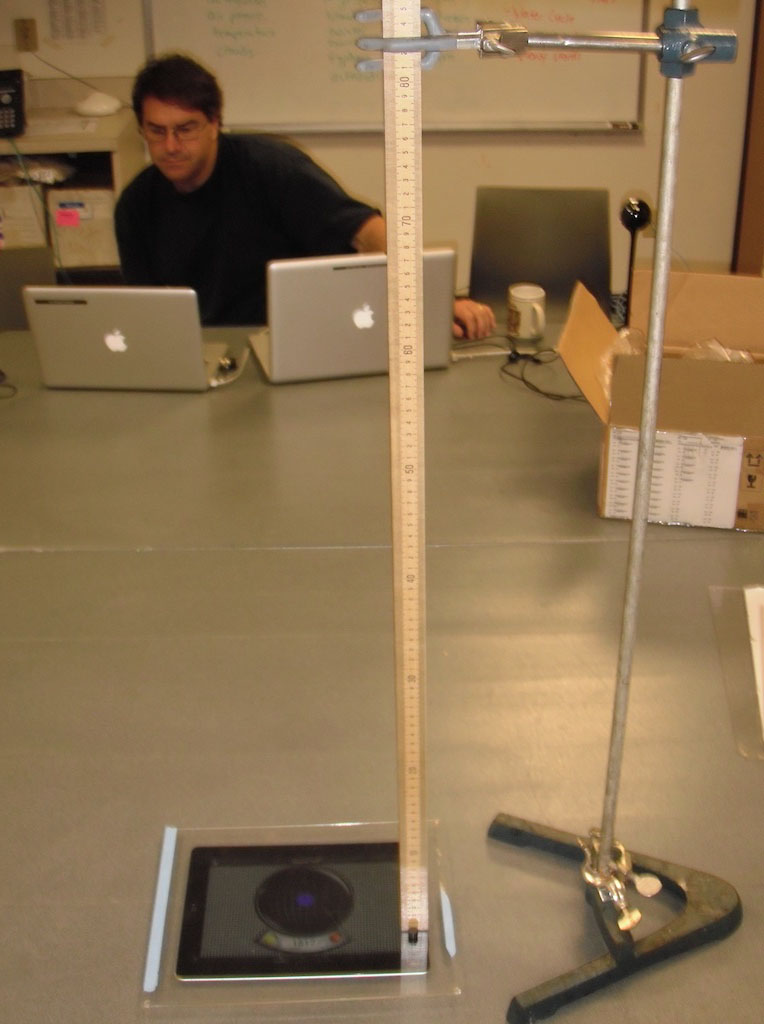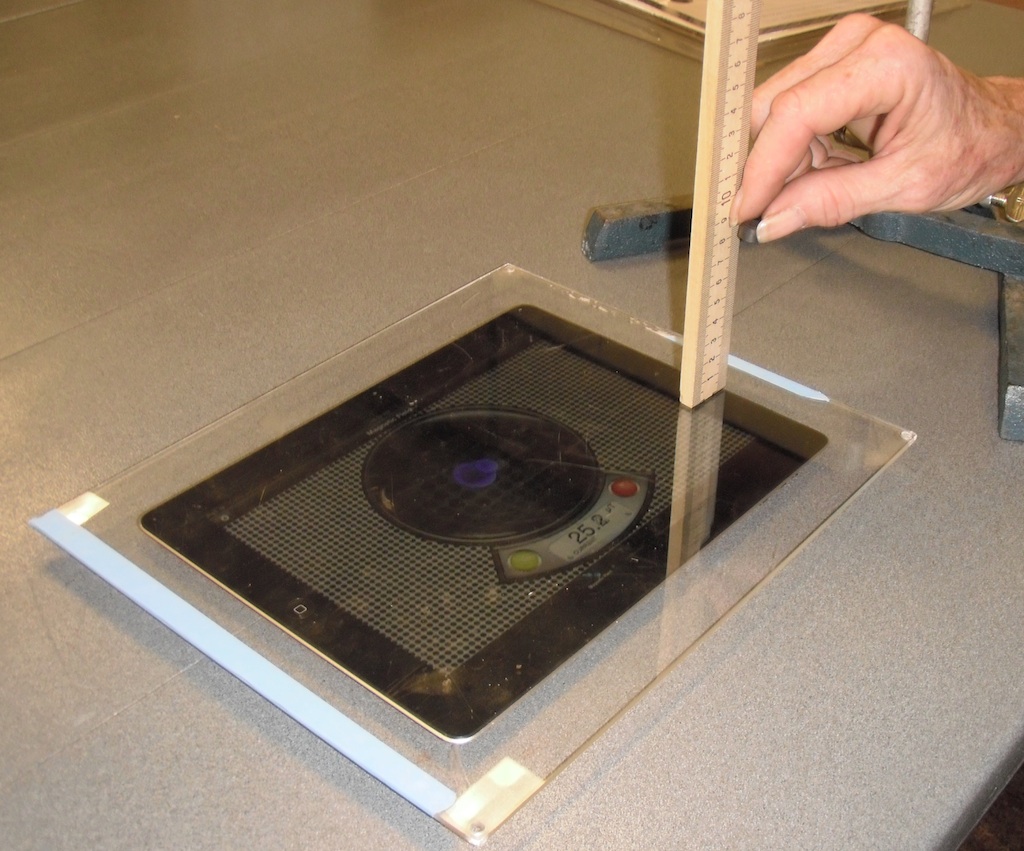Apps
Science measurement tools
Paul Doherty This workshop is available on my website : http://www.exo.net/~pauld/
Light
The Whitegoods Lightmeter ios app measures light brightness in units of lux (optionally footcandles). Brightness in lux is the human perception of intensity. Intensity is measured in watts/m^2. Human peception of brightness depends on the wavelength of the light. The unit for lux is the lumen/m^2.
Sound Loudness
The decibel meter measures the loudness of sound, L, as perceived by a human. The intensity, I, of a sound is measured in watts per m^2. The perception of sound is measured on a logarithmic scale. Perception of loudness depends on the pitch of a sound.
The relation between intensity and sound level is L = 10 log I/I0 Where I0 is the reference intensity of 10^-12 W/m^2
An intensity of 1 W/m^2 has a sound level of L = 10 log 1/10^-12 = 120 dB
For each increase in intensity of an order of magnitude the sound level increases by 10 dB.
Said another way, when you multiply the intensity of a sound by ten you add ten to the loudness.
When you double the intensity of the sound you add 3 dB to the loudness.
Sound Spectrum
bs-spectrum displays the spectrum of a sound.
SpectrumView displays the sonogram. A sonogram shows time on the x-axis, frequency on the y axis, and loudness as a color code.
Look at the sonogram of a person saying the vowels. Compare men and women.
Inclinometer
If you sight aling the edge of the device you can use the inclinometer to measure the angular height of an object.
Accelerometer
If you hold the ipad level in front of you and spin around you can observe the acceleration necessary to move the ipad in a circle. (The ipad accelerometer shows the affect of gravity provided 1g. As Einstein noted long ago gravity is indistinguishable from acceleration.)
Seismometer
Palce the ipad flat on the floor while running the seismometer application. Drop a bowling ball (or some other ball) onto the floor (if the floor will not be damaged by such a dropped object!) and observe the response of the seimometer. Try dropping the ball at different distances, and at different locations. Sometimes you might see that the signal is different even though you are dropping the ball at the same distance from the ipad, this is caused by the construction of the floor. The combination of dropping the bowling ball and observing the seismometer response probes the hidden structure of the floor in the same way that seismologists probe the structure of the earth using earthquakes as their source o seismic waves.
Magnetometer
Find the location of the magnet sensor.
Cover the ipad with a clear piece of plastic (optional).

Move a small magnet around until the arrow points straight into the screen, the magnet is directly over the sensor. You may have to flip over the magnet.

Find the north pole of your magnet.
The magnetic field by definition points out of the north pole of you magnet. In the image above the north pole of the magnet is the bottom side.
Find the magnetic field as a function of distance of the magnet
Use a ringstand to mount a meterstick vertically above the ipad, with the 0 of the meter stick touching the ipad.

Measure the magnetic field produced by a magnet as a function of distance.

Theoretically the magnetic field from a dipole magnet should drop off as the inverse 4th power of distance.
If you use the MagnetMeter app you can zero out the earth's magnetic field by pressing the red button to choose "relative magnetic field" and then pressing the yellow button to set the field to zero (like taring an electronic weight scale)
To return to absolute magnetic field press the red button again.(In each mode the yellow button has different effects.)